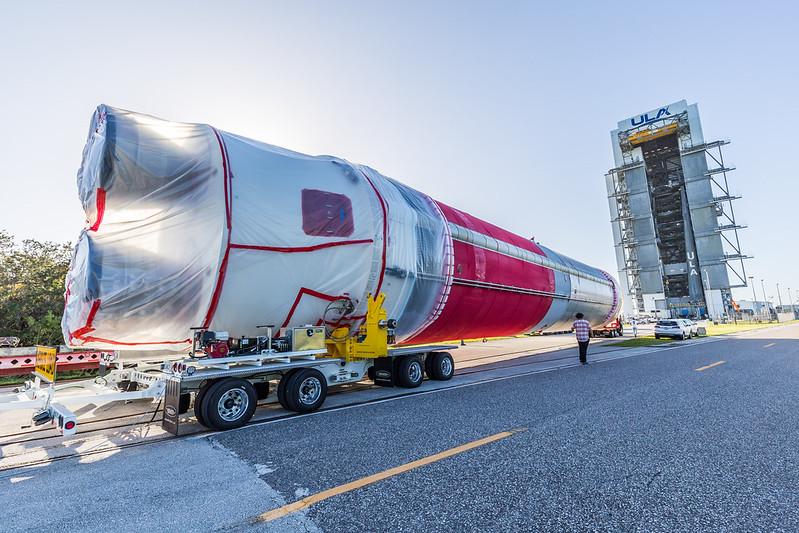This article is published in Aerospace Daily & Defense Report part of Aviation Week Intelligence Network (AWIN), and is complimentary through May 09, 2025. For information on becoming an AWIN Member to access more content like this, click here.
ULA Anticipated Winning 40% Share Of NSSL Phase 3 Awards, CEO Says

ULA's Vulcan first-stage booster at Cape Canaveral Space Force Station.
COLORADO SPRINGS—Given price competition from SpaceX, United Launch Alliance (ULA) expected to emerge from the U.S. Space Force’s National Security Space Launch (NSSL) Phase 3 competition with a smaller percentage of missions than what it secured during the predecessor Phase 2 program, ULA's CEO says.
“We certainly offered a proposal that could support the 60% share like we had the first time around, but I actually anticipated a greater likelihood of receiving the 40%, and that is what we received. It's plenty of missions. We expect that we’ll fly a predominance of high-energy orbit missions, which is our specialty. So it's as expected. We're happy to get it,” ULA CEO Tory Bruno told reporters on the sidelines of the 40th Space Symposium here in Colorado Springs on April 7.
“I felt that winning the 60% the first time was a little bit of an upset,” he adds. “I believe that they [SpaceX] expected to win 60% then, the community thought that, and I thought I would get 40, and I was surprised to have won 60. Therefore, I believed this time around they would compete that much harder.
“I was not going to price-dive in order to guarantee a win,” he adds. “This is a conventional business. I bid my cost, plus a little bit, then I get profit that I can put into reuse technology. So I bid that way. I don't have as many levers with external investment as other people have, for example … It kind of came out the way we wanted.”
On April 4, the U.S. Space Force selected SpaceX, ULA and Blue Origin to provide launch services under its NSSL Phase 3 Lane 2 program, worth a cumulative $13.7 billion.
SpaceX received the lion’s share of the military’s business, with contracts for 60% of the NSSL Lane 2 missions, worth $5.9 billion. ULA’s 40% share is worth $5.3 billion. Both companies will receive $75.9 million in fiscal 2025 funds in the first order year, for launch service support and fleet surveillance task orders, according to the contract announcement.
In a related set-aside program, Blue Origin received a contract worth nearly $2.4 billion, with about $59.2 million in fiscal 2025 funds awarded in the first order year.
The contracts are part of the Space Force’s new dual-lane launch procurement strategy. Phase 3 Lane 1 was established in 2024 and is meant to support new launch provider entrants, less-demanding missions and lower-priority payloads.
The Lane 2 program is a follow-on to the existing NSSL Phase 2 program, which requires full vehicle certification as well as the ability to reach any orbit and mission criteria. The Space Force has earmarked 49 launches through 2033 under Lane 2. Four offers were received in response to the solicitation, per the contract announcement. The fourth bidder was not identified.
The current NSSL Phase 2 contract is split 60%/40% between ULA and SpaceX, respectively. Phase 2 includes missions are scheduled for launch in fiscal 2022-27.







Comments